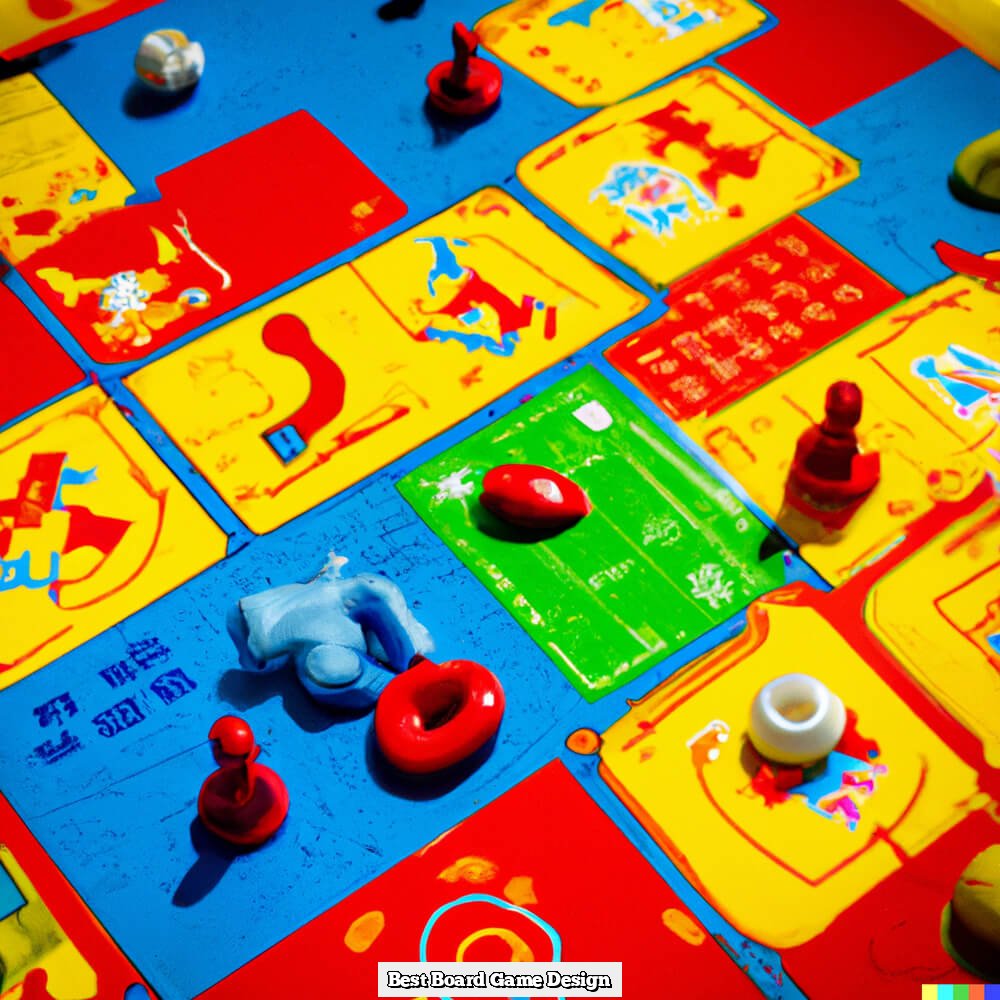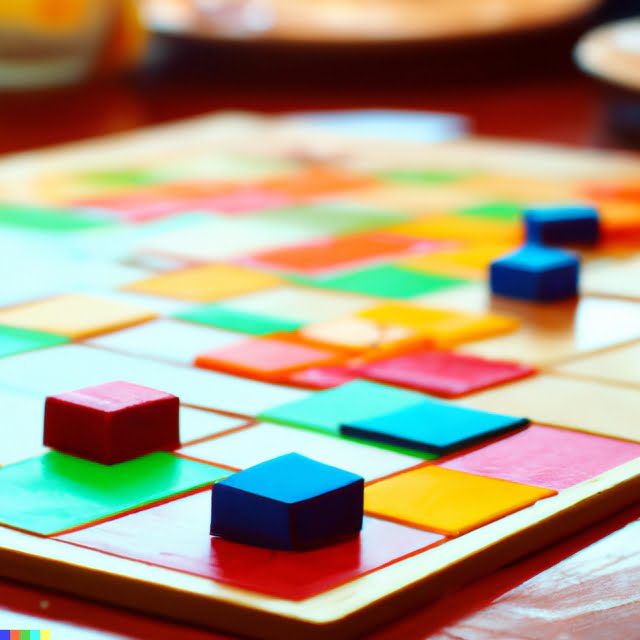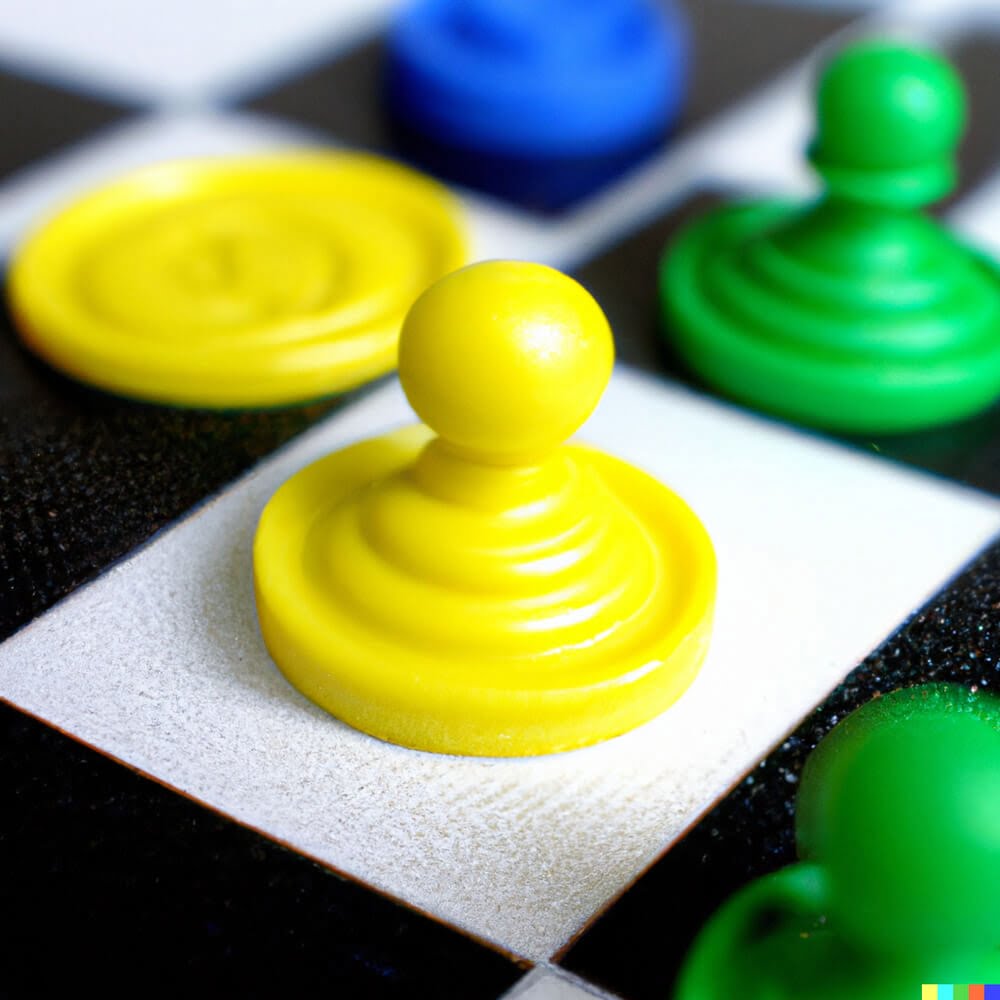Introduction
Board game design is the process of creating a unique and innovative game for players to interact with each other in a strategic and entertaining manner. Board games are an exciting way to engage all types of people in shared experiences and offer opportunities for learning, problem solving, collaboration, and fun. From classic strategy-driven card games to cooperative horror-game adventures, there are many different types of board games available to play. There are also plenty of benefits to designing your own custom board game that can’t be found elsewhere.
When creating your own board game design you will have full control over the rules, pieces, pieces movements, objectives and strategies, allowing you to create a truly tailor made experience that can be tailored exactly to your own creative vision. You’ll also have complete freedom to use whatever graphic elements or art style you wish while adding any mechanisms or custom pieces that would add further flare and intrigue. Additionally, having something tangible at the end of it all can be incredibly rewarding – as you get to share your amazing creation with friends and family during full fledged play sessions which can lead to hours filled with laughter and joy!
Setting the Foundation
Before you dive into your own board game design, it is important to understand the basics of game mechanics. First and foremost, a board game is composed of two core elements: rules and components. Rules are instructions that players must follow while playing the game. Players must know these instructions in order to make moves, evaluate their opponents’ moves, and reach victory conditions. On the other hand, components can be physical pieces such as dice or cards, or there may also be virtual components like an app or interactive online platform. Each component should have a purpose that ties back to the rules in order to drive gameplay and makes the experience unique for each player.
Next comes gameplay flow — this is how a player engages with the game over time including when they take turns and how their actions change the state of the board or environment until one person reaches the ultimate victory condition. Gameplay flows are typically loops that start at one point and either return back to that same point in order to start again (a closed-loop) or progress onward until someone wins (an open-loop). The main idea here is to create a smooth cycle of turns where each action links cohesively into other actions and drives each player towards their goal without leaving too many loose ends for people to get lost in.
Finally, problems are integral to any good board game design; difficult decisions give players something meaningful to grapple with during their turn, adding complexity while simultaneously providing them with exciting choices that challenge and engage both veteran gamers as well as those new to gaming overall. In essence, there should always be some level of tension between what players might hope for versus what actually happens – whether it’s rolling a die randomly or someone sabotaging another player’s plans with strategic maneuvers – this dynamic keeps everyone on edge throughout their play session!
Plotting Out the Steps
When making a board game design, the first step is to decide on a theme and an overall purpose. What kind of game do you want to make? Is it a fantasy-based adventure? Or is it a geopolitical strategy game? Once you’ve settled on your main idea, map out a plan for what the game will involve. Think about the elements that make up your game and how each component leads to the next. For example, if your game revolves around exploration, what kind of environment will players need to explore? Are there opponents they’ll need to confront or obstacles they’ll have to overcome?
Additionally, you’ll also need to consider how players interact with each other during gameplay. Do they engage in direct competition or can they cooperate? If it’s cooperative gaming, what unique abilities do players possess? Lastly, think about victory conditions; when does the game end and who wins? Whether victory is based on amassing resources or completing tasks first, make sure these objectives are clear in order for your players to understand how they win.
Once all goals and components are mapped out, create a few drafts of rules based on your plan. Clarify any ambiguities within the ruleset as well as terms like “players must” and “player may”. Playtest these drafts with friends and family who provide honest feedback regarding issues such as difficulty level and enjoyment potential. After making revisions based upon their input (and some final tweaks). Print out detailed copies for all participants so everyone has an accessible source of information throughout the actual gameplay. With patience (and creativity) you should have no problem creating a successful board gaming experience!
Gaining Insight
Before you begin designing a board game, it is important to first gain some insight into the subject. Do some research on different types of board games and their various components. Read articles and watch videos on game design principles, game mechanics, and game structures. Then take time to brainstorm ideas by yourself or with a group of friends who may have the same interests as you. Ask questions about what you might include in your game, such as whether it should emphasize strategy or luck; if so, how much of each? Consider themes and characters which may work well within your chosen setting, as well as any special rules that could make your game stand out among other similar games. Think about the type of players that would be attracted to your game—whether it’s for families, adults, kids, or a specific hobbyist group. Once you’ve done this, you should have an idea of what kind of board game you’d like to create.
When it comes to actually constructing your board game design further insight is also necessary. Make sure to read through forums and social media posts from people who are passionate about designing board games —these people can provide helpful advice from their experiences in developing their own projects. Additionally, check out popular titles in gaming stores and see what elements they incorporate into their gameplay—which features have been successful? Also consider the cost factor: Board games require materials such as cardboard art assets and tools like die cutting machines; these resources add up over time if you’re planning on creating multiple copies for sale. Finally consider creating a prototype! Prototyping can help identify problems before you launch your project—you can even enlist friends or family members to test it out for feedback.
Crafting Rules and Components
The first thing you will need to consider when crafting a board game design is the rules and components. A game should have objectives, parameters, and components that can be used in order to guide a player as they move through the game. As such, it is important to spend significant time crafting the rules while also creating components that accurately portray the narrative of your game. When working on the rules, keep in mind that they should remain consistent throughout all plays of the game; however, leave room for dynamic adaptation throughout successive gaming sessions. In terms of components, this is where creativity plays the biggest role, as it takes considerable thought to come up with pieces that provide both fun and utility within your board game. Artwork should also contribute to immersing players in your desired setting whether fantasy or science fiction or something else entirely. Additionally, you may also consider providing extra pieces and cards containing “house rules” or special variables so that no two games play exactly alike and replay value remains intact for years to come.
Testing Your Board Game
Board game design is an incredibly intricate and involved process, from concept to completion. Before any cards are printed or figurines assembled, aspiring board game designers must go through the crucial step of testing their work in order to make sure it’s ready to hit the shelves (or gaming tables).
Testing your board game is a major part of making sure your design is not just entertaining but enjoyable. Through testing, you can understand what strategies players will find within your game and how they interact with one another. This allows you to refine existing features, points of interest, and paths of victory so that they feel balanced and make sense within the overall message that you’re trying to convey. Additionally, successful testing gives you good insight into any potential issues such as rule confusion or unbalanced elements with which players may struggle.
When developing testing strategies for a board game design, it is important to get feedback from as wide a range of people as possible. It’s best to include both experienced board gamers and novices so that you can gain perspectives on how the rules mesh with different types of players. During the test phase, it may be useful to use surveys or questionnaires in order to gauge individual player experience— How much fun did they have? Did certain sections feel spaced out or rushed? Evaluating both positive reactions and criticisms can help you make improvements for a greater all-around user experience.
Personalizaing Your Game
Designing a successful board game involves more than just creating a concept or brainstorming. Before you can begin to make your game, you should first make sure that it is as unique and personalized as possible. From the stand point of art and color, there are several ways to ensure that your game stands out from the crowd.
One way to make your board game design unique is through the use of interesting artwork and graphics. This can include using vivid colors, fun patterns and textures, and selection of specific fonts or images to create an eye-catching visual impact. Consider whether a particular image or visual element is appropriate for the overall thematic context of your game. For example, if you’re developing a strategy-based card game it might be wise to use something closer in style to established brands such as Magic: The Gathering rather than creating something that might feel auto-generated with no thought given to how it ties in with the theme of the game itself. Similarly, if you are creating a whodunit mystery board game with secret passage-ways and hidden secrets, then avoid colorful cartoons with flashy animation – unless stylistically that’s what appeals most.
In addition to artwork and graphic elements, consider adding personal touches such as custom tokens or characters designed to represent teams or individuals playing your board game. Color also plays an important role in board games; certain colors may carry certain symbolic meanings or evoke particular emotions which can be used strategically by designers when deciding on their color palette for the pieces included in their new board game designs. Above all else try consciously designing with intentionality behind each choice – doing so will likely maximize customer engagement while conveying your own personal artistic flair!
Distribution and Presentation
When you’ve finished designing a board game, the way in which you package your product and present it to potential players can be just as important as the game itself. To make sure that your board game design stands out and makes a lasting impression on its audience, there are several steps you should take in terms of distribution and presentation.
First, consider how your game will physically look when it’s presented to players. The cover art should be eye-catching and engaging, and the graphics should clearly illustrate how to play the game. If you plan to sell or distribute it yourself, find creative ways of displaying the game that captures attention—such as window displays or interactive displays in gaming shops. Additionally, pay attention to the quality of components used for the game—make sure they are well-made and durable so that players will have an enjoyable experience playing it.
You should also consider digital methods of presentation for your board game design – creating attractive GIFs or videos that capture gameplay moments or create brief introductions by using motion graphics can be great tools for getting people interested in what your boardgame is about. It is also important to spread the word about your design through social media channels such as Facebook, Twitter, Instagram etc., where people may share their own opinion about it as well as draw people’s attention towards it. Last but not least, create multiple language versions for both print materials (manuals / rules) so anyone from different cultures can understand how to play correctly. These methods along with quality components in product packaging enable customers make more informed buying decisions resulting higher sales volumes
Conclusion
After you have designed your board game, all that’s left to do is to share the results and celebrate! There are a variety of ways in which you can share your new board game. You can post a copy of your work online, submit it online to contests or conferences, invite friends and family to join you for a few test-plays, or bundle it up with instructions as a gift for someone who would love it.
Also take the time to document your creative journey – how the idea was sparked by existing media, which iterations of the game were tested before arriving at the final product, and what changes were made from earlier versions. This will not only provide insight into how successful you have been in making this one particular board game but also offer ideas for future projects. And most importantly, be sure to recognize yourself for all the hard work and creative efforts that went into this beautiful design!

I love playing all kinds of games – from classics like Monopoly to modern favourites like Ticket to Ride.
I created this blog as a way to share my love of board games with others, and provide information on the latest releases and news in the industry.





